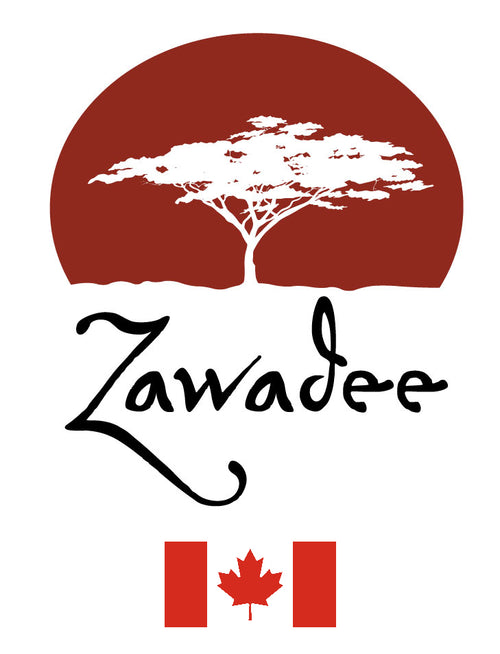African Wild Dogs: A Beautiful Animal on the Brink of Extinction
There are thousands of animals currently on the endangered species list, many of which call Africa home. One such animal fighting for its survival is the often misunderstood, African wild dog.
The African wild dogs’ numbers are dwindling fast. They once roamed much of the continent, but today can only be found in a few small pockets scattered throughout Africa. It’s estimated that there may be as few as 3,000-6,000 left.
As is often the case, humans have been the biggest threat to these animals. But today, much is being done to increase the population of the wild dogs.
Let’s hope it’s not too late.


 The pack is comprised of a dominant breeding pair, a number of non-breeding adults and their dependent offspring. What’s interesting is that all of the males are related to each other, and all of the females are related to each other, but not to the males.
Males stay with the pack they were born into, but when females are between 14-30 months they leave the pack in groups of sisters to find another pack that doesn’t have any sexually mature females.
Wild dogs in the same pack look out for each other. They share food with one another. Smaller pups are allowed first go at a fresh kill, and dogs help weak or ill members. Even though only one dog in a pack has pups, the entire pack looks after the young. The whole pack even sleeps huddled up together.
Efforts to Save the African Wild Dog
In 2004, African wild dogs were classified as an endangered species by the International Union for Conservation of Nature (IUCN).
They do have some natural threats—namely lions, but most of their decimation has been at the hands of humans. Wild dogs’ natural habitat is continually being chewed up by human encroachment.
Additionally, they’re poisoned and hunted by some, who consider the dogs as pests, who threaten domestic livestock. They’re also killed inadvertently by diseases that are spread from domestic animals, and are sometimes killed in traffic accidents in the ever-increasing roadways zigzagging through their habitats.
This video, courtesy of Journeyman Pictures depicts the beauty of this endangered species.
By the way, we highly recommend subscribing to Journeyman Pictures YouTube channel. Interesting, challenging and provocative content, published every week.
"Journeyman Pictures is your independent source for the world's most powerful films, exploring the burning issues of today. We represent stories from the world's top producers, with brand new content coming in all the time."
The wild dogs’ population is dangerously low, but there are glimmers of hope. Groups such as, the African Wildlife Foundation and the African Wild Dog Conservancy are working to get African wild dogs’ numbers back up.
The already fragile ecosystem will be out of balance if we lose these animals. But through concerted efforts and education, the small population of African wild dogs that are left will hopefully increase and eventually thrive.
The pack is comprised of a dominant breeding pair, a number of non-breeding adults and their dependent offspring. What’s interesting is that all of the males are related to each other, and all of the females are related to each other, but not to the males.
Males stay with the pack they were born into, but when females are between 14-30 months they leave the pack in groups of sisters to find another pack that doesn’t have any sexually mature females.
Wild dogs in the same pack look out for each other. They share food with one another. Smaller pups are allowed first go at a fresh kill, and dogs help weak or ill members. Even though only one dog in a pack has pups, the entire pack looks after the young. The whole pack even sleeps huddled up together.
Efforts to Save the African Wild Dog
In 2004, African wild dogs were classified as an endangered species by the International Union for Conservation of Nature (IUCN).
They do have some natural threats—namely lions, but most of their decimation has been at the hands of humans. Wild dogs’ natural habitat is continually being chewed up by human encroachment.
Additionally, they’re poisoned and hunted by some, who consider the dogs as pests, who threaten domestic livestock. They’re also killed inadvertently by diseases that are spread from domestic animals, and are sometimes killed in traffic accidents in the ever-increasing roadways zigzagging through their habitats.
This video, courtesy of Journeyman Pictures depicts the beauty of this endangered species.
By the way, we highly recommend subscribing to Journeyman Pictures YouTube channel. Interesting, challenging and provocative content, published every week.
"Journeyman Pictures is your independent source for the world's most powerful films, exploring the burning issues of today. We represent stories from the world's top producers, with brand new content coming in all the time."
The wild dogs’ population is dangerously low, but there are glimmers of hope. Groups such as, the African Wildlife Foundation and the African Wild Dog Conservancy are working to get African wild dogs’ numbers back up.
The already fragile ecosystem will be out of balance if we lose these animals. But through concerted efforts and education, the small population of African wild dogs that are left will hopefully increase and eventually thrive.


The Basics about African Wild Dogs
Although about the size of a medium domestic dog, you won’t confuse these animals with your pet. They have mottled coats with patches of red, black, brown, white and yellow fur. Each dog has a unique color scheme, so they can recognize each other at great distances. These long-legged animals have dark brown circles around their eyes and big rounded ears. African wild dogs (Lycaon pictus) also share these interesting characteristics:- Typically weigh between 17-36 kg (37-79 lb), and are about 60- 75 cm (24-30 in) tall at the shoulder
- Only have four toes per foot
- Are also called cape hunting dogs or painted dogs
- Can live up to 11 years
- Can cover an astounding 50 km (31 mi) a day looking for food
- Sleep during the day
- Have litters of 2-20 pups, but of course not all survive


 The pack is comprised of a dominant breeding pair, a number of non-breeding adults and their dependent offspring. What’s interesting is that all of the males are related to each other, and all of the females are related to each other, but not to the males.
Males stay with the pack they were born into, but when females are between 14-30 months they leave the pack in groups of sisters to find another pack that doesn’t have any sexually mature females.
Wild dogs in the same pack look out for each other. They share food with one another. Smaller pups are allowed first go at a fresh kill, and dogs help weak or ill members. Even though only one dog in a pack has pups, the entire pack looks after the young. The whole pack even sleeps huddled up together.
Efforts to Save the African Wild Dog
In 2004, African wild dogs were classified as an endangered species by the International Union for Conservation of Nature (IUCN).
They do have some natural threats—namely lions, but most of their decimation has been at the hands of humans. Wild dogs’ natural habitat is continually being chewed up by human encroachment.
Additionally, they’re poisoned and hunted by some, who consider the dogs as pests, who threaten domestic livestock. They’re also killed inadvertently by diseases that are spread from domestic animals, and are sometimes killed in traffic accidents in the ever-increasing roadways zigzagging through their habitats.
This video, courtesy of Journeyman Pictures depicts the beauty of this endangered species.
By the way, we highly recommend subscribing to Journeyman Pictures YouTube channel. Interesting, challenging and provocative content, published every week.
"Journeyman Pictures is your independent source for the world's most powerful films, exploring the burning issues of today. We represent stories from the world's top producers, with brand new content coming in all the time."
The wild dogs’ population is dangerously low, but there are glimmers of hope. Groups such as, the African Wildlife Foundation and the African Wild Dog Conservancy are working to get African wild dogs’ numbers back up.
The already fragile ecosystem will be out of balance if we lose these animals. But through concerted efforts and education, the small population of African wild dogs that are left will hopefully increase and eventually thrive.
The pack is comprised of a dominant breeding pair, a number of non-breeding adults and their dependent offspring. What’s interesting is that all of the males are related to each other, and all of the females are related to each other, but not to the males.
Males stay with the pack they were born into, but when females are between 14-30 months they leave the pack in groups of sisters to find another pack that doesn’t have any sexually mature females.
Wild dogs in the same pack look out for each other. They share food with one another. Smaller pups are allowed first go at a fresh kill, and dogs help weak or ill members. Even though only one dog in a pack has pups, the entire pack looks after the young. The whole pack even sleeps huddled up together.
Efforts to Save the African Wild Dog
In 2004, African wild dogs were classified as an endangered species by the International Union for Conservation of Nature (IUCN).
They do have some natural threats—namely lions, but most of their decimation has been at the hands of humans. Wild dogs’ natural habitat is continually being chewed up by human encroachment.
Additionally, they’re poisoned and hunted by some, who consider the dogs as pests, who threaten domestic livestock. They’re also killed inadvertently by diseases that are spread from domestic animals, and are sometimes killed in traffic accidents in the ever-increasing roadways zigzagging through their habitats.
This video, courtesy of Journeyman Pictures depicts the beauty of this endangered species.
By the way, we highly recommend subscribing to Journeyman Pictures YouTube channel. Interesting, challenging and provocative content, published every week.
"Journeyman Pictures is your independent source for the world's most powerful films, exploring the burning issues of today. We represent stories from the world's top producers, with brand new content coming in all the time."
The wild dogs’ population is dangerously low, but there are glimmers of hope. Groups such as, the African Wildlife Foundation and the African Wild Dog Conservancy are working to get African wild dogs’ numbers back up.
The already fragile ecosystem will be out of balance if we lose these animals. But through concerted efforts and education, the small population of African wild dogs that are left will hopefully increase and eventually thrive.


You might also enjoy our blog series Getting To Know Africa. Here's a taste of this interesting series - Get To Know Africa: Wildlife Abounds in the Kenyan Lake System of the Great Rift Valley.
Cover Photo Source: photo credit: Rare Painted Dog via photopin (license)





